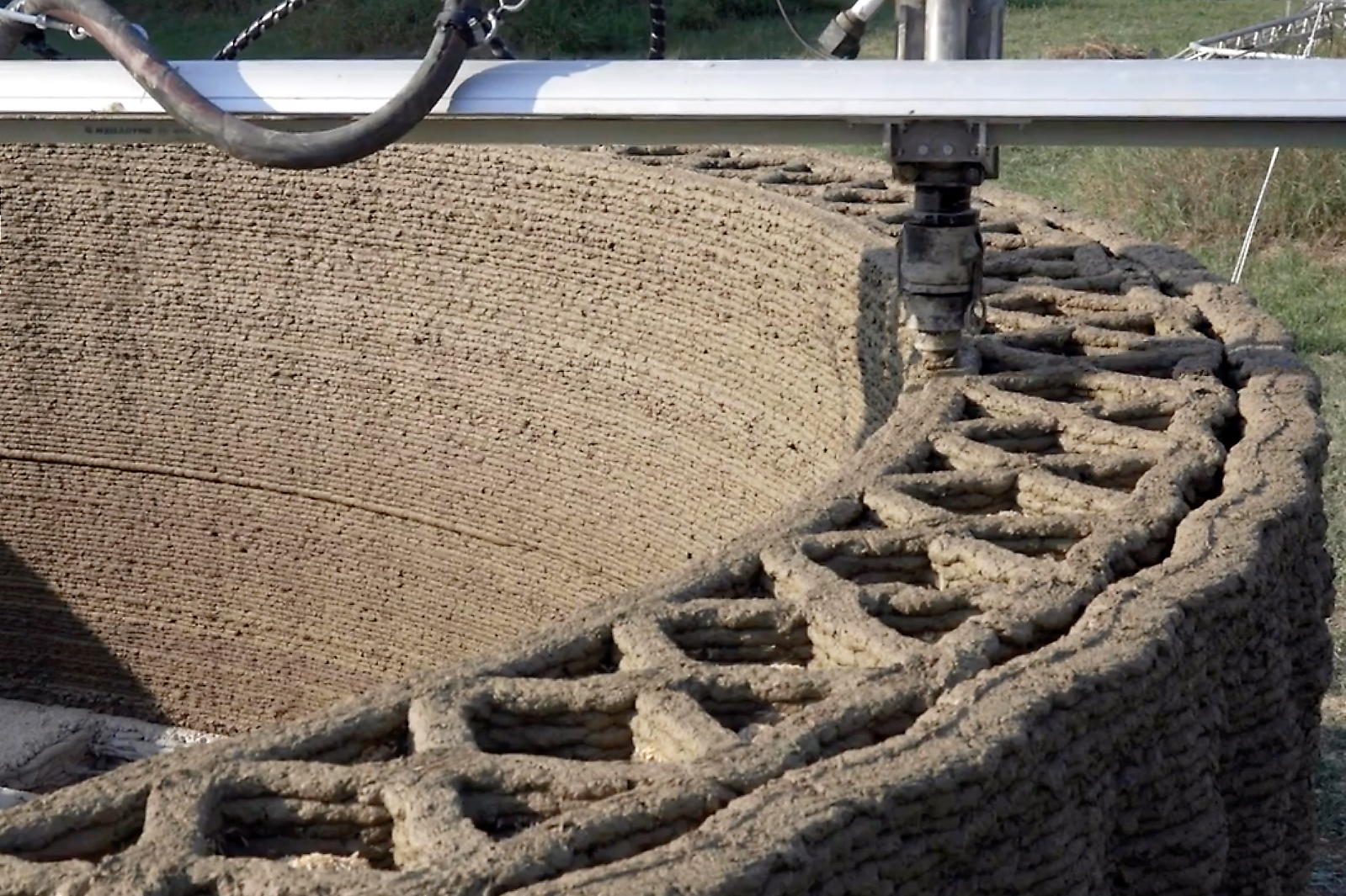After the construction of Gaia, the first architectural module based on raw earth and 3D printing, WASP (World’s Advanced Saving Project) starts a new technological application with a view to Expo 2020. The 3D printed house measures 30 square meters and is located in Massa Lombardo, in Shamballa, in the region of Emilia-Romagna, Italy. Their goal is to help solve the world’s housing problem by using natural, low-cost, low-impact local materials. In this sense, the use of this technology is not limited to a specific urban or rural context.
The construction in question represents an advanced eco-sustainable model, especially based on the performance that masonry guarantees in terms of interior comfort. This method means a substantial reduction in the costs induced by the use of raw earth and residues from the agricultural chain.
The technique used in this project demonstrates the potential for the use of diversified materials in 3D printing and construction in general. In fact, waste materials from a raw material such as rice can become effective insulation. The cavities inside the walls allow ventilation and efficiency in general. In this sense, willing to interpret its vision in a way compatible with the demands of each applicant, 3D printing WASP intends to start the construction of an eco-neighbourhood. This training would be able to implement replicable construction strategies in any territorial circumstance.
